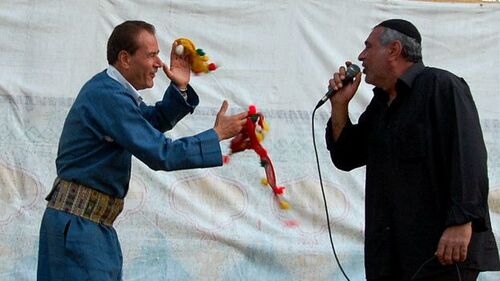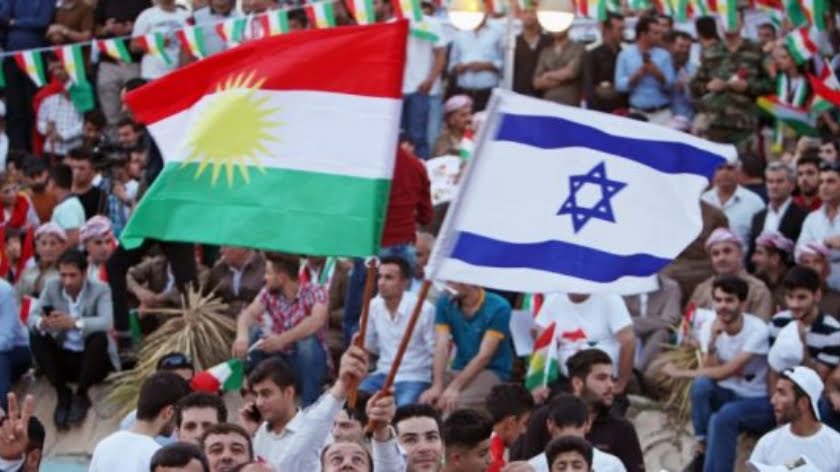The dispersion of Jews throughout the world is not a matter that needs proof. The people and their religion have been scattered throughout the world since the beginning of history and have settled in all countries from the Middle East to Europe, the United States, and Russia. However, because they believed in their promised land, they always wanted to return to it and create their own country. In some countries, they have been welcomed as citizens, and in many others, they have lived under pressure from adherents of other religions. The example of Nazi Germany is more obvious, and the massacre and genocide of these people are known as Auschwitz and the human cremation ovens.
In Iran during Reza Shah Pahlavi's time, Jews were distinguished from others by marking a yellow star on their foreheads in the same way as in Nazi Germany. This was done to reduce their demands and deprive them of social services as much as possible. If we look at the films left from that time, we can see the fact and what the pan-Iranians now want to show another face of this bitter truth for political reasons is not the truth.

In Kurdistan, apart from the Jews who have migrated from other countries, a group of Kurdish tribes in the region have converted to this religion since ancient times. For example, the Jewish tribe of Benyamini came to Kurdistan from abroad, and the Hazbani dynasty of the rulers of Erbil converted to Judaism in the first century BC.
There were about 100 Jewish areas in Kurdistan. In the 12th century, Benyamin Tudlayi mentions David Aloy, and a leader named Mashih of Kurdistan, who revolted against the Persian king and planned to lead the Jews back to Jerusalem. He also tells of the wealthy and powerful Jewish community of Mosul, which was an important base and trade center of Kurdistan.

In the 12th century AH, Mosul, a fully Kurdish city and trade center, was also a special place for Jewish merchants. Jews in other areas, who lived in fear of Christians and Muslims in Palestine, Syria, and southern Iraq, had autonomy in their areas and social relations, religious affairs, trade, etc. were free, and their relationship with ordinary people has been strong and good.
They had many well-known personalities in Kurdistan, one of whom was Asenath Barzani. She lived in Mosul. In fact, she is the daughter of Rabbi Samuel Barzani, one of the leaders of this religion in Kurdistan. Later, she married Kurds in the same area and became a teacher and expert because they had their religious training center, she began teaching Judaism, Torah, laws, and rules of Judaism and became the head of Torah instructors in Kurdistan. But the first group of Jews returned to their Promised Land in the 16th century, and the return continued until 1660. Their return did not mean separating from the culture, language, and situation they had seen, learned, and mixed within Kurdistan. Therefore, as “bicultural” people, apart from their religion, they carry two Kurdish and Jewish cultures, and many of them still maintain this characteristic.

In the 20th century, Jewish Kurds were returned to Israel following the decision of the powerful countries and the establishment of the State of Israel. Among them were famous people such as Moshe Barzani, an activist of the Zionism movement.
Erich Brauer, a German ethnographer and ethnologist, provides some good information in his book "Jewish Kurds". The author, who was a Jew, has compiled an oral history of the Jewish presence in Kurdistan and interviewed 56 prominent Kurdish Jews living in cities in southern and eastern Kurdistan. The Jews were residents of Zakho, Akre, Amedi, Shino, Suleimani, and Duhok. In this study, the author concluded that Kurdish Jews had good relations with both ordinary Kurdish people and especially with the nobles and authorities of Kurdistan.
However, apart from the areas, Jews also settled in most of the cities of the East part of Kurdistan. In Bokan, Mahabad, Sina, and many other cities, they had their own neighborhoods, synagogue, and temples, and they were well-known and trusted among people.

Jews in Kurdistan have always had a special situation. They were never separated from the people and had their own synagogue and places of worship in most of the cities of East and South parts of Kurdistan. This was due to the religious tolerance of the Kurds. They treated the Baha'is the same way and all Baha'is living in Kurdistan are still free and far from any kind of violence and discrimination.
According to unofficial statistics, the population of Kurdish Jews is about 250000, most of whom live in Jerusalem and several villages in Israel. Currently, the most famous Kurdish Jewish figures in Israel are Moshe Barzani, Isaac Mordecai, Zvi Bar, Yousef Shailoj, and Ilana Elia. Jewish Kurds of Israel still preserve Kurdish customs, religion, and songs and celebrate their own holidays every year.








